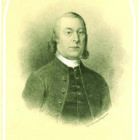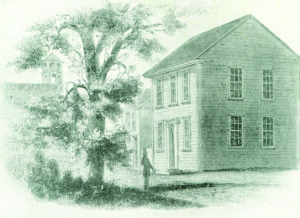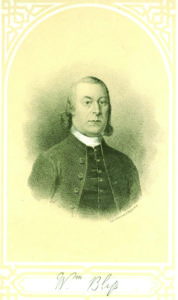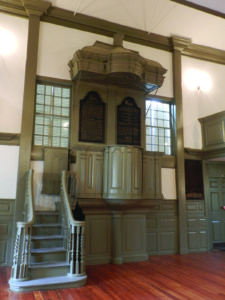
Sep 26, 2018
by Janet Thorngate
Fourth in a series of spinoff articles from recent research on the Newport, Rhode Island, Seventh Day Baptists1
There were at least eleven of them. Their stories hide in the records over a period of 123 years. Discovering them elicits emotions from shock and shame to awe and fascination—then admiration.
Forty-nine years after the Newport Seventh Day Baptist Church was organized in 1671, the church record book contains a list of people recently baptized and received into the church. Tucked in the middle of the list is this one:
March 6 1719/20 Pegge Arnold negro woman baptized and added to the Church ye 19 day
We immediately look for other Arnolds and find Sarah (c1668-1746) who had joined the church before 1708 and in 1746 left a bequest to be invested and the proceeds paid to the church Elder or minister. From other sources we learn that “The Negro woman Peggy” along with 200 acres and buildings …, 200 sheep, 14 head of “neat cattle,” etc. were willed to Sarah Arnold by her husband, Benedict Arnold (1642-1727), son of Gov. Benedict Arnold, and grandfather of the Revolutionary War traitor.
That was fifty years before the next recorded African baptism. Pegge Arnold may have died a slave. The slave trade was an important part of the economy in Pre-Revolutionary War Newport. By the time Africans next appear in the church records, nearly twenty percent of Newport’s population was African-American and one-third of the Newport middle class owned at least one slave. They lived in the home and worked as house servants or worked in the shops of craftsmen making furniture, masonry, spirits, barrels, ships, gravestones, etc., often working for wages.
Five years before the Declaration of Independence, two entries jump from the pages of the record book:
June ye 12th 1771 this day meet at Greene Ende after sermon
by Elder Maxson Sipio a young negro man servant of Deacon
Tanner was baptized and passed under [hands] and admited
a member of the Church
Aug. ye 7th [1771] meet at Greene End After a sermon by
Elder John Maxson Arthur a negro man servant of the widow
Mary Flagg was baptized and passed under hands and admited
a member of the Church
“Servant” was a euphemism for “slave.” Were they slaves? Owned by Deacon John Tanner, silversmith responsible for placing the Ten Commandments above the church pulpit, Trustee of Rhode Island College? Owned by Mary (Ward) Flagg, daughter of Governor Richard Ward (church member and benefactor) and sister of Governor Samuel Ward, member of the Continental Congress?
For the next several decades, long after the deaths of John Tanner and Mary Flagg, the names of Scipio Tanner and Arthur Flagg appear regularly in the church records, usually attending meetings or signing letters along with others. Arthur’s wife, Flora, and their five children who lived to adulthood were baptized and joined the church. Flora Flagg’s gravestone in God’s Little Acre, the African-American section of Newport Common Burial Ground, declares:
She was a worthy member of the Sabbatarian Baptist Church
& was faithful to the cause of Christ.
Depart my friends wipe off your tears
Here I must rest till Christ appears.
Arthur’s less inspiring stone reads:
The sweetest remembrance of the just
shall flourish while they sleep in dust.
Scipio Tanner and Arthur Flagg, and later Arthur Flagg, Jr., were early members of Newport’s Free African Union Society, the first black cultural society in the nation. Flagg, often using his African name, Arthur Tikey, served as Judge and Treasurer for many years and Tanner as Secretary. Meetings of the Board were often held in either Tikey’s or Tanner’s home. (Few members probably owned their own home or had one large enough for the board meeting.) The Society’s annual Day of Humiliation, Fasting and Prayer, held in one of the Baptist or Congregational churches with a minister speaking, was often hosted in the Seventh Day Baptist meetinghouse with Elder William Bliss bringing the message. One year they voted to take money from the Society treasury to purchase a pair of gloves and some tea to send with the thank you letter to “The Reverend Dr. Parson Bliss.” When the African Union Society became the African Benevolent Society in 1808 “for the exclusive purpose of establishing and maintaining a charity school, the African Free School,” Tikey and Tanner were again on the board and Arthur Flagg, Jr. served as a teacher in the night school. Their friend Cuffe Benson had joined the Society in 1796 and on December 7, 1806, he and Arthur Flagg, Jr. were both baptized and joined the SDB Church.
Were they slaves? Deacon John Tanner wrote his first will in 1776 when he escaped Newport just as the British Army began its three-year occupation of the city. (It was not a safe place for a member of Rhode Island’s Council on War.) Tanner’s will frees and manumits his “Negro man Scipio.” But Scipio Tanner did not receive his manumission papers until, back in Newport, John Tanner died in 1784. In Scipio’s own will (1805/1819) he says, “I give and recommend my Soul into the hands of that God who gave it…and what worldly estate it hath please God to bless me with…to my loving Peggy Tanner.” We must wonder, who was Peggy? Possibly Arthur Flagg’s daughter Pegge, who joined the church in 1783?
And Arthur Flagg, aka Arthur Tikey? He was a rope maker, “formerly servant to Mr. Ebenezer Flagg” as the church record notes. Ebenezer’s rope-making business, Collins & Flagg, closed soon after his death in 1762, but Arthur may not have been manumitted until Mary Flagg died in 1781. By this time many Newport slaves were being freed. In 1774, Rhode Island adopted a limited act “prohibiting the importation of Negroes into this Colony,” but not until after America was a nation did Rhode Island’s Act of 1784 begin to abolish the ownership of slaves. Even then it was a gradual emancipation, not the immediate freeing of the Emancipation Proclamation in the midst of the Civil War eighty years later.
So what happened to the rest of our Newport African-American Sabbatarians? Just before the Declaration of Independence, Elder William Bliss, who later preserved the church through the dark years of the British occupation, baptized “Ann Rodman, a Mulatto woman.” Then in the War’s aftermath, the church dealt with many wayward members including the “unhappy case of our backsliding sister Anna Rodman,”—but she was eventually “received again into fellowship.” Another disciplined by the church was Arthur and Flora Flagg’s daughter, Violet, who had joined in 1786. In 1804, soon after her mother and her seventeen-year-old sister died, she was called to task for “excessive drinking.” Two years later she was restored to fellowship after confession and repentance, but in 1808 was again suspended from communion and fellowship for “unjustifiable conduct” in family relationships. She may be the Violet Flagg (c1765-3 August 1852, age 87) who was buried in Coaster’s Harbor Smallpox Burial Ground adjacent to a smallpox “hospital” where sufferers could be isolated and cared for. (The dates fit.)
And the other Flagg sisters? Both were “baptized and passed under hands and admitted as members of the church” the same day in May 1796. Rosanna married Simeon Taylor and is listed on the last membership list (1843) where her death is recorded as October 24, 1847, aged 75 years, a match to the stone in God’s Little Acre where Simeon and their three infant children are also buried. Phoebe Flagg seems to disappear—or could she be Phoebe Benson on the 1808 and 1843 lists? The Phoebe who is wife of Cuffe Benson who joined in 1806? Their three infant children, who died between 1801 and 1803, have grave markers in God’s Little Acre. Possibly the Julian Benson on the 1843 list was also their son?
It seems a sad ending. Church records and grave stones are about all we have for clues—a wonder that we have those. After the 1784 membership list, members were no longer identified by race in the church book. That was progress. (We only know that Cuffe Benson was black by his African name—meaning born on Friday—and his membership in the Free African Union Society.) Undoubtedly others made significant contributions, as did Scipio Tanner, Arthur Tikey, Arthur Flagg, Jr. and Elders John Maxson and William Bliss. They encouraged and supported the freedom, respect, and equal treatment of Africans who became Americans at the same time that British colonists were becoming Americans.
It is clear that these spiritual forefathers and mothers reflected the culture of their time perhaps more than they resisted its evils. But dare we judge them? The records seem to verify that from the time that Tacy Hubbard led out as the first to begin keeping the seventh- day Sabbath—men, women, Native Americans, and African-Americans received equal treatment with regard to baptism and membership in the Newport Seventh Day Baptist Church. That was a beginning.
1 Sources for most information in this article may be found in Baptists in Early North America: Newport, Rhode Island, Seventh Day Baptists by Janet Thorngate (Macon, GA: Mercer University Press, 2017). In addition to a history of the church in its historical context, the book includes the previously unpublished church records and the collected writings of Samuel Hubbard pertinent to the church’s history. The book may be ordered from the publisher for $60: www.mupress.org or Mercer University Press, 501 Mercer Univ. Dr., Macon GA 31207.
Additional information, not in the above book, is from two sources: The Proceedings of the Free
African Union Society and the African Benevolent Society, Newport, Rhode Island 1780-1824 , edited with an Introduction by William H. Robinson (Providence: The Urban League of Rhode Island, 1976); and John Eylers Sterling, Barbara J. Austin, Letty R. Champion, Newport, Rhode Island Colonial Burial Grounds (Rhode Island Genealogical Society, 2009).




